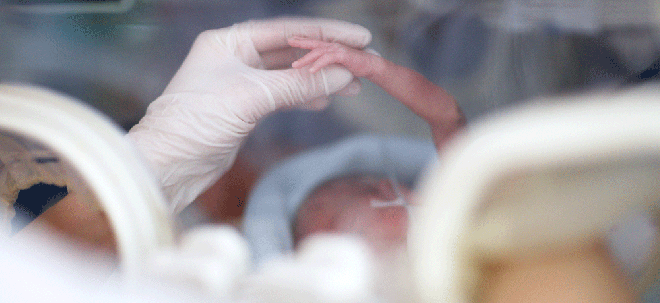‘Artificial womb’ device offers potential for keeping premature babies alive
A plastic bag-like medical device filled with amniotic fluid acting as an ‘artificial womb’ has been tested successfully in a study using unborn lambs.
The womb-like environment designed by paediatric researchers could transform care for extremely premature babies, by mimicking the prenatal fluid-filled environment to give the tiniest newborns a precious few weeks to develop their lungs and other organs.
“Our system could prevent the severe morbidity suffered by extremely premature infants by potentially offering a medical technology that does not currently exist,” said study leader Alan Flake, a foetal surgeon and director of the Center for Fetal Research in the Center for Fetal Diagnosis and Treatment at Children’s Hospital of Philadelphia (CHOP).
Flake and colleagues report on preclinical studies of their extra-uterine support device today in Nature Communications. They tested and monitored effects on foetal lambs, in which prenatal lung development is very similar to that occurring in humans.
The innovative system uses a fluid-filled container attached to custom-designed machines that provide physiologic support. The foetal lambs grow in a temperature-controlled, near-sterile environment, breathing amniotic fluid as they normally do in the womb, their hearts pumping blood through their umbilical cord into a gas exchange machine outside the bag. Electronic monitors measure vital signs, blood flow and other crucial functions.If these animal results translate into clinical care, Flake envisions that a decade from now, extremely premature infants would continue to develop in chambers filled with amniotic fluid, rather than lying in incubators, attached to ventilators.
Of the one in 10 US births that are premature (younger than 37 weeks gestational age), about 30,000 per year are critically preterm — younger than 26 weeks. Extreme prematurity is the nation’s leading cause of infant mortality and morbidity, accounting for one-third of all infant deaths and one-half of all cases of cerebral palsy attributed to prematurity.
In the UK 60,000 babies are born prematurely each year. According to Tommy’s, across the globe more than one in ten pregnancies will end in preterm birth, and this number is rising.
It states that in babies born preterm, the chance of survival at less than 23 weeks is close to zero, while at 23 weeks it is 15%, at 24 weeks 55% and at 25 weeks about 80%.
“These infants have an urgent need for a bridge between the mother’s womb and the outside world,” said Flake. “If we can develop an extra-uterine system to support growth and organ maturation for only a few weeks, we can dramatically improve outcomes for extremely premature babies.”
The goal is to support infants from 23 weeks to 28 weeks gestational age; at 28 weeks they cross the threshold away from the most severe outcomes.
Written by Lu Rahman







